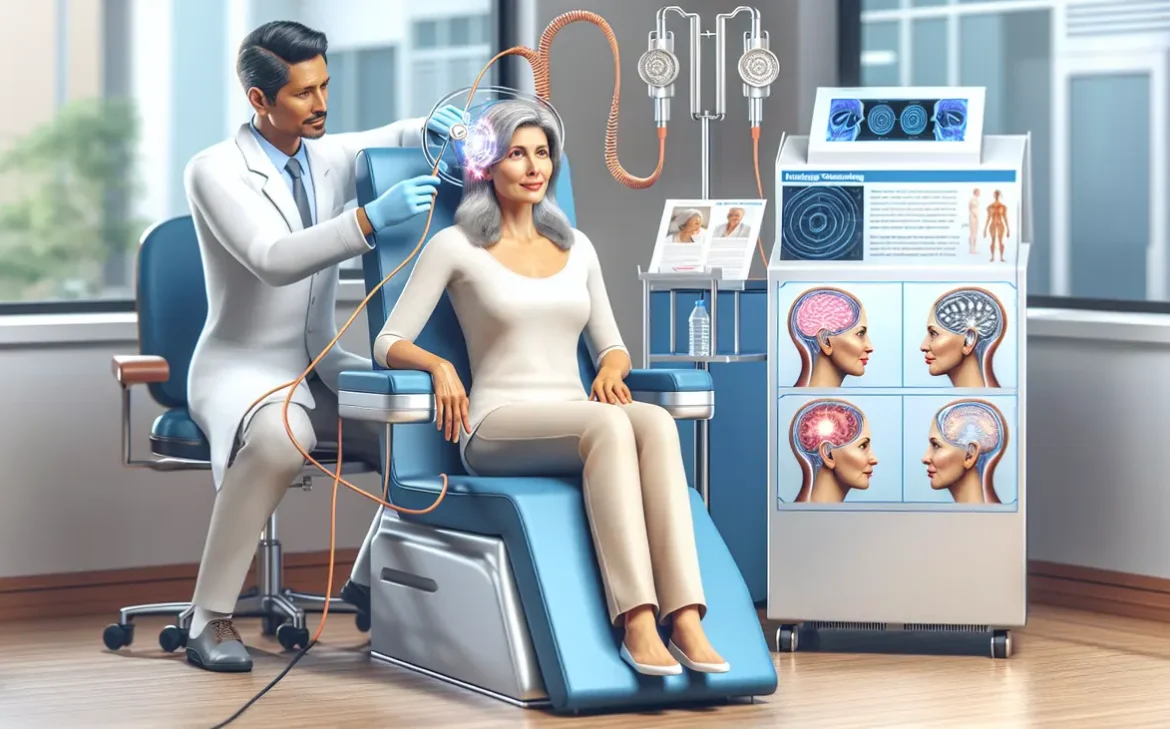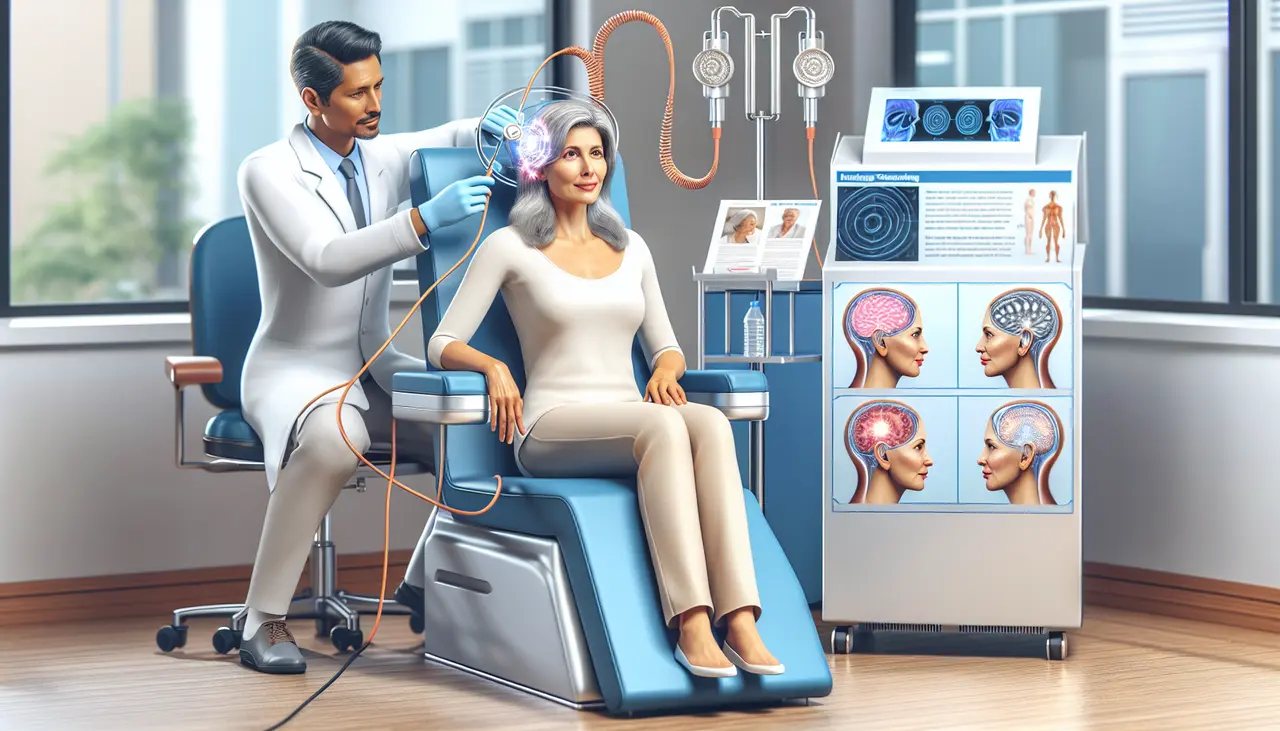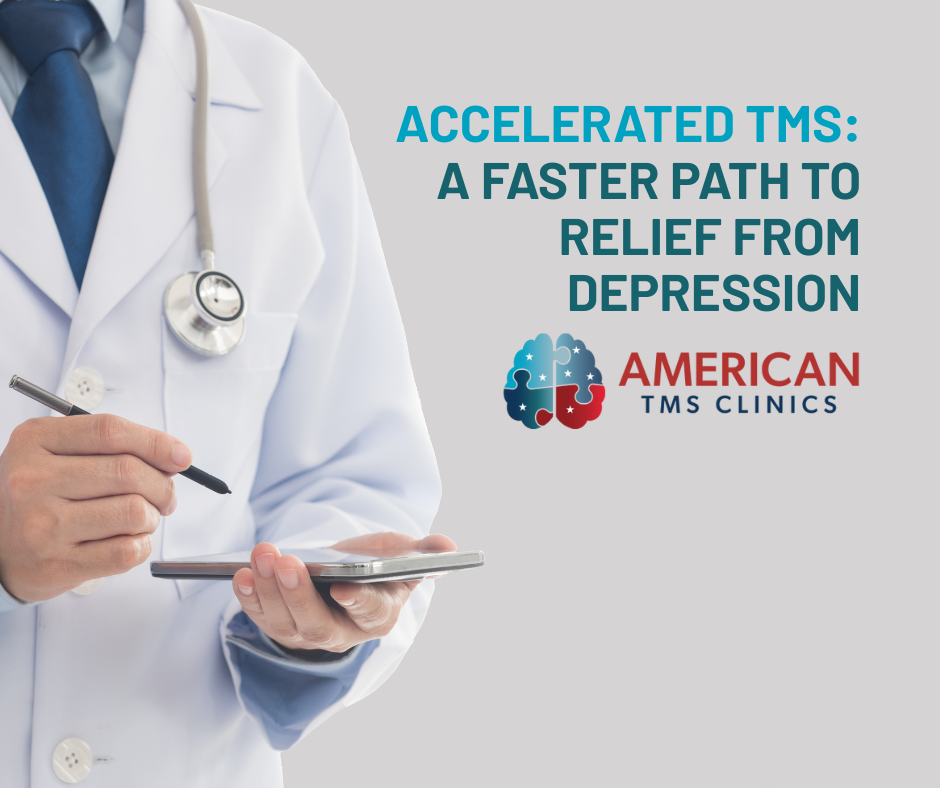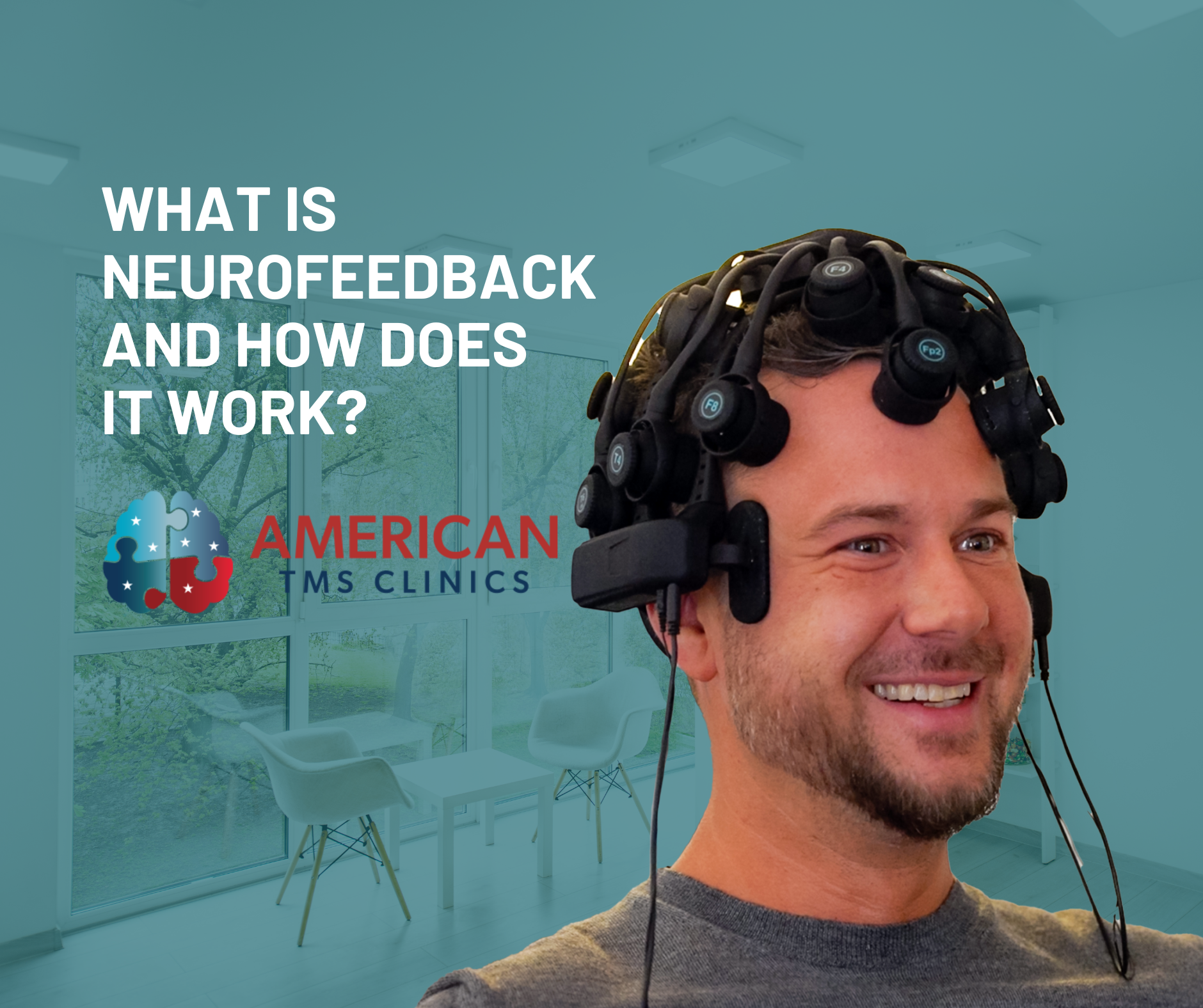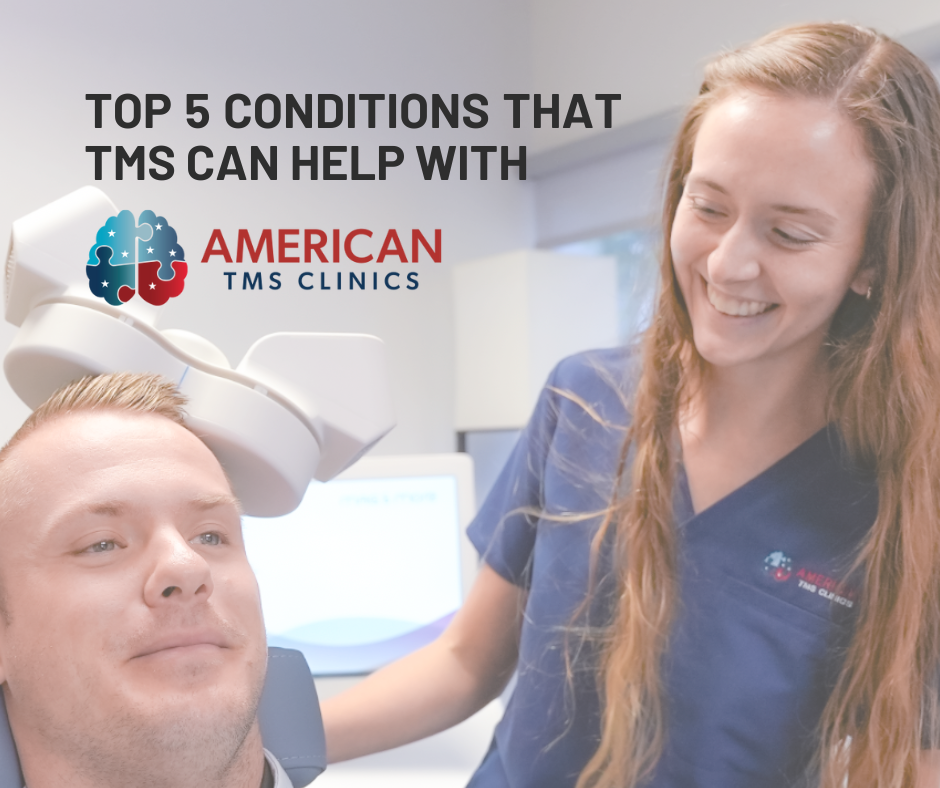Introduction to TMS Therapy and Its Growing Popularity
TMS Therapy, short for Transcranial Magnetic Stimulation, is grabbing headlines for its role in treating OCD. Imagine using magnets to treat your brain. That’s TMS for you. It sends magnetic pulses to stimulate parts of the brain linked to OCD. It’s like a gentle nudge to your brain cells, telling them to behave differently. The beauty of TMS? It’s non-invasive. No surgery, no anesthesia. You sit there, and the device does its work. Why is it gaining traction? Because it’s showing promise where traditional treatments might not have worked as well. Patients are sharing stories of how TMS gave them a new lease on life, making it a hot topic in mental health discussions. This growing buzz is not just talk; it’s backed by studies suggesting TMS could really make a difference for OCD sufferers. In a world seeking gentler, effective treatments, TMS stands out as a beacon of hope.
What is TMS Therapy? A Simple Explanation
TMS Therapy stands for Transcranial Magnetic Stimulation Therapy. It’s like a remote control for your brain, but instead of changing channels, it aims to fix the signals that are going haywire, often in people with OCD. Here’s how it works: a specialist places a magnetic coil, pretty much like a big, specialized magnet, near your head. When they turn it on, it sends magnetic pulses straight to parts of your brain that are linked to OCD. It’s not magic, but science, aiming to adjust the brain’s activity without needing surgery or medication. Think of it as a gentle nudge to your brain, telling it to behave differently. It’s gaining attention because, for some, it works when other treatments haven’t. Simple as that.
TMS Therapy Reviews: Real-Life Experiences of OCD Patients
Patients with OCD are finding hope in TMS therapy, a non-invasive treatment that uses magnetic fields to stimulate nerve cells in the brain. Through real-life experiences shared in reviews, many say TMS therapy has significantly reduced their symptoms, allowing them to reclaim parts of their lives once controlled by OCD. One patient mentioned, “After years of trying everything, TMS was a breakthrough for me. My obsessive thoughts have quieted, and I feel like I’m in control again.” Another said, “It’s not an instant fix, but it’s the closest thing to feeling normal again.” These stories highlight not just improvement in symptoms but a profound impact on personal freedom and quality of life. While TMS therapy effectiveness varies, the positive outcomes speak volumes, offering a beacon of hope for many still struggling with OCD.
How TMS Therapy Offers Hope for OCD Sufferers
TMS, or Transcranial Magnetic Stimulation, is showing real promise for those battling OCD, a condition where unwanted thoughts and repetitive behaviors take over. This non-invasive therapy uses magnetic fields to stir up brain activity in areas affected by OCD. Simply put, TMS helps reset your brain’s rhythm. People who’ve tried many treatments without success are finding relief through TMS. It’s like giving your brain a fresh start. Some report feeling better in weeks, able to live without the constant burden of OCD thoughts. The beauty of TMS? No surgery, no meds, just a series of sessions. For many, it’s a beacon of hope, proving that change is possible, even when things seem stuck.
The Science Behind TMS Therapy for OCD
TMS, or Transcranial Magnetic Stimulation, is like a magic wand for the brain, especially for folks battling OCD. Imagine a device that doesn’t cut or poke but uses magnetic fields to tickle just the right spots in the brain responsible for OCD. This is not hocus pocus but science. The idea is to stimulate underactive parts of the brain that OCD messes with. By sending these magnetic waves through your scalp, it’s like waking up those brain areas from a deep sleep. They start to work properly again, helping reduce OCD’s grip on a person’s life. No potions or spells here, just a smart use of technology to nudge the brain towards normalcy.
Preparing for Your First TMS Session: What to Expect
Getting ready for your first TMS (Transcranial Magnetic Stimulation) session might have you feeling a mix of excitement and nervousness. Understanding what’s ahead can help. First off, know that TMS is non-invasive. This means no surgery, no anesthesia, and you’re fully awake. It uses magnetic fields to stimulate brain cells, aiming to improve OCD symptoms. Here’s a simple rundown of what to expect:
- Arrival: Show up wearing comfortable clothes. You don’t need to bring anything special.
- Prep: You’ll get a fitting for a special cap that helps target the magnetic pulses. Think of it as a high-tech hat fitting session.
- The Session: Sit back in a reclining chair. The technician places the magnetic device on your head. It’s normal to hear tapping sounds and feel tapping sensations during the 20-40 minute session.
- Aftermath: Most people jump right back into their day. Some report a mild headache or scalp discomfort immediately after, but it’s usually brief.
Remember, the goal of TMS is to dial down those tough OCD symptoms, making daily life a bit easier. Stick with the plan your healthcare team sets. Progress might not be immediate, but with time, many see a significant difference.
The TMS Treatment Process: A Step-by-Step Guide
TMS, or Transcranial Magnetic Stimulation, is a revolutionary treatment shaking up the world of OCD therapy. Here’s a straightforward look at how it works. First off, you meet with a medical professional to discuss if TMS is right for you. Not everyone’s a candidate, so this chat is crucial. Next, you get prepped for the procedure. This isn’t surgery, so no need to panic. You’re awake, sitting comfortably. The machine, which kind of looks like an oversized headphone, is positioned over your head. The moment of truth follows. The machine starts sending magnetic pulses to stimulate specific parts of your brain linked to OCD. This part is painless, lasts about 20 to 40 minutes, and happens over 4 to 6 weeks, with sessions typically five times a week. Last but not least, the follow-up. You discuss any changes with your doctor and figure out the next steps. Patients often see a significant relief in symptoms, making all the effort worthwhile. Remember, it’s about getting you back to feeling like yourself again.
Common Misconceptions About TMS Therapy Debunked
People often think TMS Therapy is a scary, brain-zapping method out of a sci-fi movie. Not true. TMS, or Transcranial Magnetic Stimulation, is a non-invasive and FDA-approved procedure for treating OCD among other conditions. Another big misconception? That it hurts. Most folks feel a slight tapping on their head but nothing that’s really painful. And, yes, while some worry about the time commitment, treatments typically last 20-40 minutes and you’re doing them 5 days a week for 4-6 weeks. It sounds like a lot, but it’s a blip when you think of the potential to jumpstart big changes in your mental health. Plus, this isn’t a last resort kind of thing. You don’t have to try and fail at everything else to get here. TMS is an option even if medications haven’t worked out, or if you’re looking for alternatives. So, let’s clear the air: TMS Therapy isn’t scary, overwhelmingly painful, or only for those at the end of their rope. It’s a viable, effective treatment path for those battling OCD, offering a beacon of hope where other methods may have fallen short.
The Advantages of Choosing TMS Therapy for OCD
TMS Therapy is like a game-changer for people with OCD. It stands for Transcranial Magnetic Stimulation and is pretty awesome because it doesn’t need any surgery or medication to work. Here’s the deal – it directly targets the brain areas involved with OCD, making it a pinpoint attack on the problem. One of the big wins for TMS is that it’s safe. Sure, some folks might get a headache or feel a bit weird where the magnets work their magic, but that’s about it. No scary side effects like some of the meds out there. Another point for TMS is it’s effective. People who’ve felt stuck with their OCD symptoms often start to see real changes, sometimes even after other treatments have failed. It’s not an overnight thing, but many say it’s the push they needed. Also, no daily pills or ongoing treatments. You go through a set number of sessions, and bam, you’re done. Plus, TMS therapy is getting thumbs up everywhere. More and more research backs it up, and insurance companies are starting to cover it because it works. In short, if OCD’s been a heavy shadow in your life, TMS might just be that beam of light you’ve been looking for.
Conclusion: The Future of TMS Therapy in Mental Health Treatment
In wrapping up, TMS therapy has become a beacon of hope for those grappling with OCD. It’s a game-changer that’s reshaping the landscape of mental health treatment. Why? It offers a fresh alternative when traditional methods don’t hit the mark. It’s important to recognize that mental health care is evolving. TMS is at the forefront of this revolution. Its ability to target specific areas of the brain linked with OCD symptoms without the side effects commonly seen with medication is a big win. That means a better quality of life for many. So, what does the future hold? Expect to see TMS therapy becoming a staple in mental health treatment. Its potential is vast, not just for OCD but for a range of conditions. As we learn more and fine-tune this technology, the impact on mental health care will only grow. The road ahead is promising.

